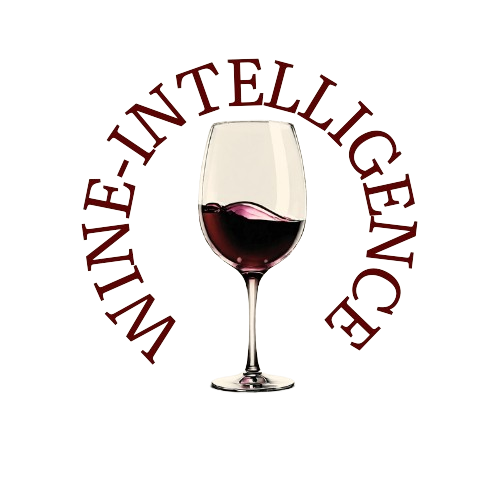From February 10 to 12, 2025, Wine Paris will transform the ‘City of Lights’ into the epicentre of the global wine and spirits industry.
After three years of robust growth, the event continues to gain traction with over 4,600 exhibitors from 50 producer countries and 50,000 visitors from 140 countries expected to attend. Hosted by Vinexposium, the exhibition has achieved unprecedented international scope, securing its position as a unique global nexus for business and a tool for economic and political influence. As the industry faces fundamental geopolitical, economic, and environmental changes, the 6th edition of Wine Paris promises to provide strategic responses through practical, sustainable solutions for the entire industry.
A World of Wine at Your Fingertips
Wine Paris 2025 will host producers from every corner of the world, with a notable rise in participation from key wine-producing countries. As the event continues to grow, exhibitors from France are expected to increase by 7%, reflecting the country's prominent role in the global wine market. Alongside France, other major wine nations such as Italy, Spain, Portugal, the United States, Germany, and Austria will have substantial representation.
The event is set to cover more than 116 international pavilions, with 8 new pavilions added to the mix, offering a broad variety of wines and spirits, making it a one-stop-shop for sourcing wines for export markets. This expansion of space, combined with 1,200 dedicated club buyers and an increased floor space of 25% compared to the 2024 edition, promises to create more business opportunities for producers, importers, and distributors.
The Heart of the Industry: Paris
Paris is a city known for its accessibility, infrastructure, and influence. As a hub for international trade, it serves as the ideal location for Wine Paris. The event's strong organizational structure, backed by the professionalism of Vinexposium’s teams, ensures the event's success year after year. Buyers from all over the globe prioritize Wine Paris as a strategic and prime business platform, and its 130 sessions in the official Academy events programme promise to offer valuable insights and trends for industry professionals.
Wine Innovations: What to Expect
Orange Wines: A Rebirth
One of the most exciting developments in recent years has been the resurgence of orange wines. Made from white grapes through skin-contact fermentation—once reserved for red wines—these wines have a golden or amber hue and a tannic texture. Their complex aromas, often marked by dried fruits, flowers, and spices, are redefining how we think about white wine. Originating from Georgia, this ancient technique has found its way into wine regions across France, Italy, and Croatia, becoming a major innovation in the wine space.
Volcanic Wines: The Power of the Earth
Volcanic soils have become a key factor in the production of distinctive wines. Regions such as Italy, Spain, Greece, Iceland, and Japan are producing wines that offer intense minerality and structure. The mineral-rich volcanic soils imbue the wines with unique qualities, including salinity, acid tension, and aromas that range from ripe fruits to smokey gunflint notes. These wines are quickly gaining recognition for their extraordinary typicity and the intense concentration of flavors driven by extreme climates.
Biodynamic Farming & Natural Winemaking
Another growing trend in the wine world is the move toward biodynamic farming and natural winemaking. These sustainable practices focus on environmental respect and minimal intervention. Biodynamic winegrowers use lunar cycles and plant-based preparations to nourish their soils, while natural winemaking emphasizes spontaneous fermentation using wild yeast. The resulting wines are celebrated for their authenticity, with distinctive aromas that showcase the terroir and the unique growing conditions of each vineyard.
The No/Low Alcohol Trend
The rise of No/Low alcohol wines and spirits is a noteworthy trend, particularly among younger generations like Millennials and Gen Z, who are increasingly mindful of their health and well-being. These consumers are looking for sophisticated, alcohol-free alternatives that still deliver the social experience of drinking. Alcohol-free wines, produced through innovative techniques such as vacuum evaporation, preserve the original flavors and aromas while removing alcohol. Similarly, non-alcoholic spirits, like gin, rum, and whisky, are made with plant infusions and advanced distillation methods to replicate the flavor experience without the alcohol.
Simultaneously, the No/Low movement has sparked the development of premium alcohol-free cocktails. Crafted from blends of top-quality ingredients, these drinks offer complex flavors and unique textures, providing a satisfying alternative to traditional cocktails.
The Future of Wine Business
Wine Paris 2025 promises to be a landmark event for professionals across the wine industry. With its broad international scope, increased floor space, and a wealth of new innovations and trends, it will undoubtedly serve as a vital platform for networking, learning, and exploring business opportunities. The focus on sustainability, biodynamics, and new production techniques will help shape the future of the wine market, while the growth of No/Low alcohol products responds to changing consumer demands. For anyone involved in the wine trade, Wine Paris 2025 is an event not to be missed.

